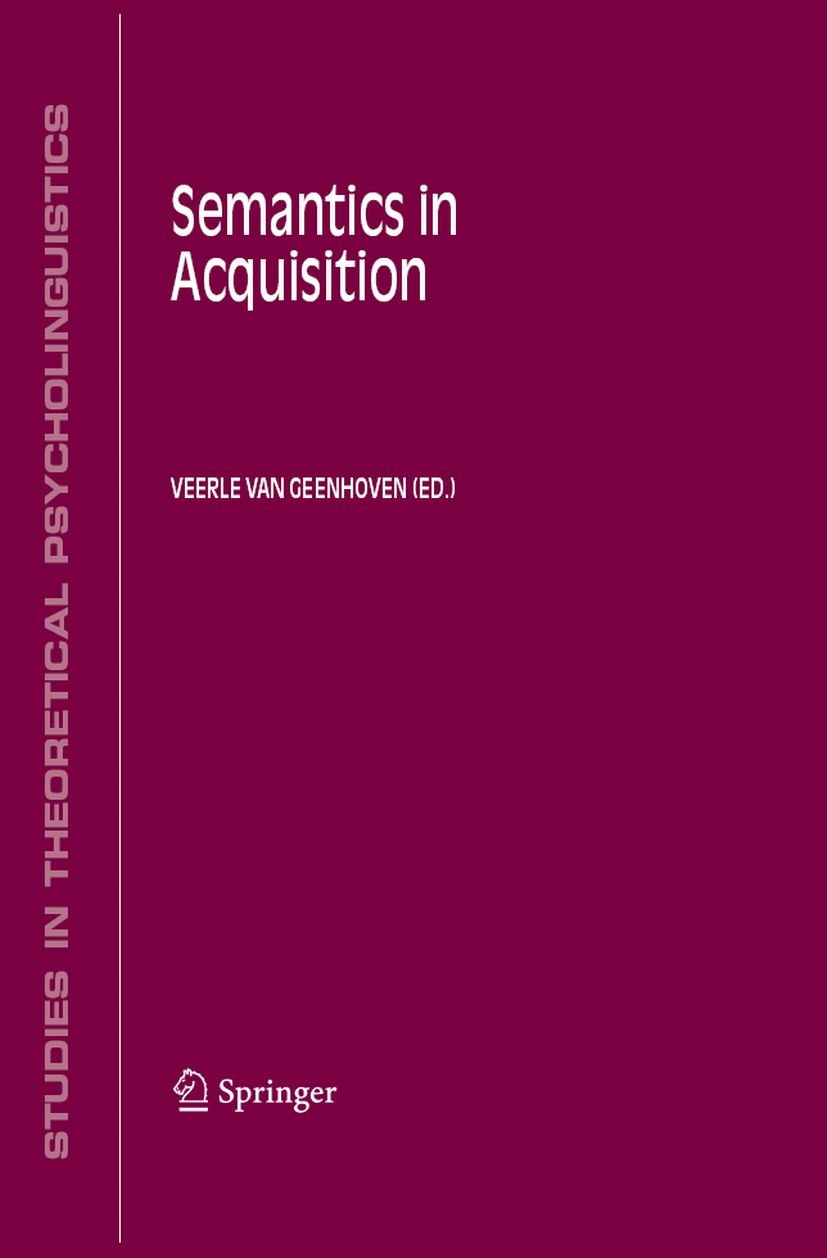| 书目名称 | Semantics in Acquisition | | 编辑 | Veerle van Geenhoven | | 视频video | http://file.papertrans.cn/865/864729/864729.mp4 | | 概述 | The two linguistic subfields of semantics and language acquisition are connected to each other, which has rarely been done before.Semantics usually deals with adult language, and language acquisition | | 丛书名称 | Studies in Theoretical Psycholinguistics | | 图书封面 |  | | 描述 | A good deal of work in language acquisition has been devoted to children’s interpretation of sentences that contain the universal quantifier, e. g. , every in English. It has been observed in several experimental studies and across several languages that some school-age children experience difficulty in interpreting such sentences (e. g. , Inhelder & Piaget, 1964; Roeper & de Villiers, 1991; Philip, 1995). Non-adult responses from children have been found in various conditions, including the circumstance exemplified in the picture in Figure 1, where three boys are each riding an elephant and a fourth elephant (referred to as the ‘extra-object’) is not being ridden. Some children who are shown such a picture sometimes respond No to the question in (1) relative to this picture: (1) Is every boy riding an elephant? Figure 1. The Extra-Object Condition To justify their negative answer to the question in (1), children often point to the extra object, i. e. , the elephant that is not being ridden. This reply has been called the symmetrical response or the exhaustive pairing response since children who give this kind of response seem to interpret the question to be about the symmetry (i. | | 出版日期 | Book 2006 | | 关键词 | Acquisition; Psycholinguist; Syntax; Temporal aspect; Tense; language acquisition; semantic; semantic resea | | 版次 | 1 | | doi | https://doi.org/10.1007/1-4020-4485-2 | | isbn_softcover | 978-1-4020-4484-7 | | isbn_ebook | 978-1-4020-4485-4Series ISSN 1873-0043 Series E-ISSN 2215-1788 | | issn_series | 1873-0043 | | copyright | Springer Science+Business Media B.V. 2006 |
The information of publication is updating

|
|
 |Archiver|手机版|小黑屋|
派博传思国际
( 京公网安备110108008328)
GMT+8, 2025-12-16 06:06
|Archiver|手机版|小黑屋|
派博传思国际
( 京公网安备110108008328)
GMT+8, 2025-12-16 06:06


